

Engage prospects with a scan and streamline customer engagement with FREE QR code marketing tools by Sona – no strings attached!
Create a Free QR CodeFree consultation

No commitment

Engage prospects with a scan and streamline customer engagement with FREE QR code marketing tools by Sona – no strings attached!
Create a Free QR CodeFree consultation

No commitment
The carpet pad suppliers industry is navigating a market defined by changing material preferences, rising sustainability expectations, and a demand for instant, digital access to information. Traditional lead capture methods that rely on static brochures, paper order forms, and manual follow-ups cannot keep pace with buyers who expect real-time answers and effortless actions. As a result, high-value prospects slip through the cracks when their in-person interest leaves no digital trace, and CRM records suffer from missing or incomplete data.
Today’s buyers expect to see specs, certifications, and prices on the spot. They want to validate eco-friendly claims while standing in a showroom, review warranty information on a sample board, and request a quote without waiting on a call back. QR codes bridge that gap by turning every physical surface into a digital onramp. Packaging, print collateral, sample kits, trade show displays, and even pallets can route buyers to guided online experiences, all while capturing intent signals for future engagement.
When deployed strategically, QR codes unlock new capabilities for carpet pad suppliers: airtight capture of buyer interest, faster handoffs to sales, cleaner CRM data, and richer retargeting audiences. This guide shows how to apply QR codes across your marketing and sales ecosystem so you can streamline buyer journeys, improve campaign efficiency, and convert curiosity into revenue with far less friction.
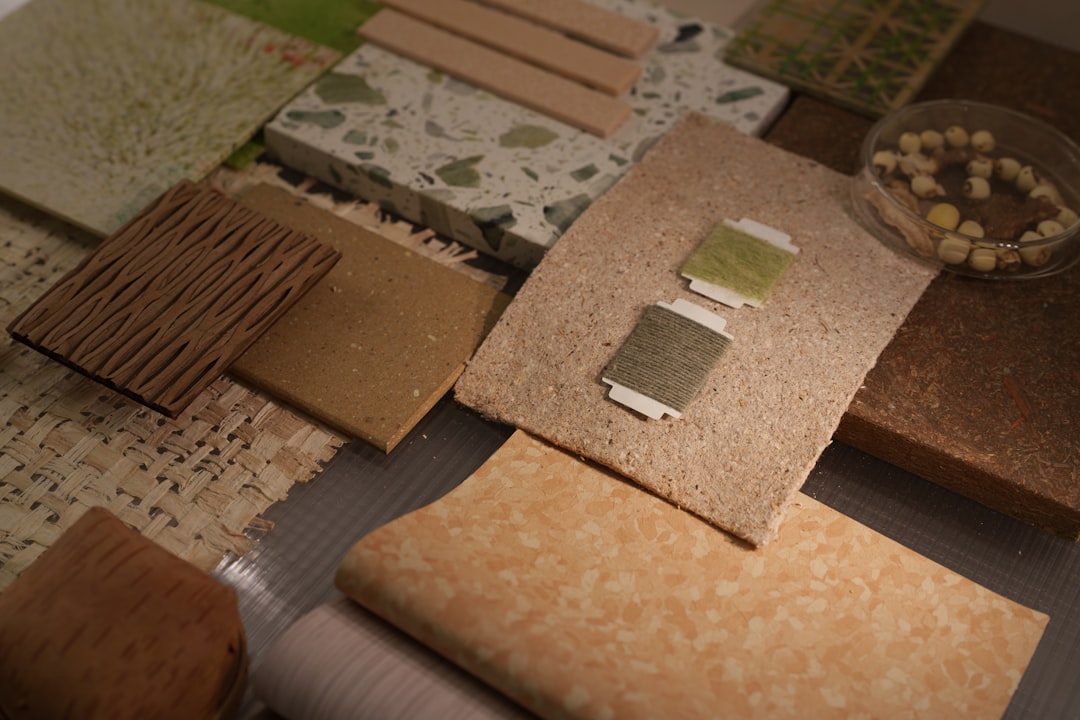
In the carpet pad supply sector, growth often stalls because qualified prospects engage with printed materials or event displays but never enter your digital funnel. QR codes in marketing fix this by converting analog interactions into measurable actions. A contractor who scans a sample label to compare fiber versus foam options becomes a known lead with a documented intent signal. A distributor who scans a spec sheet to check compression ratings moves from anonymous interest to a trackable follow-up.
Replacing slow, analog processes with QR-enabled workflows creates speed and consistency. Instead of paper forms that go missing after trade shows, a “Scan to request a quote” code feeds a CRM form that assigns the lead to the right territory rep. Instead of waiting on a salesperson for technical details, a “Scan for VOC certifications” code leads to an up-to-date page that logs the interaction and triggers an educational email. The result is higher lead quality and better access for buyers who want information, support, and pricing the moment they need it.
Here’s how to leverage QR codes effectively:
Modern platforms like Sona QR sync scan data to your CRM in real time, reduce the risk of losing promising accounts, and support retargeting across email, SMS, and paid ads. With the right setup, every scan shortens the distance from interest to opportunity.
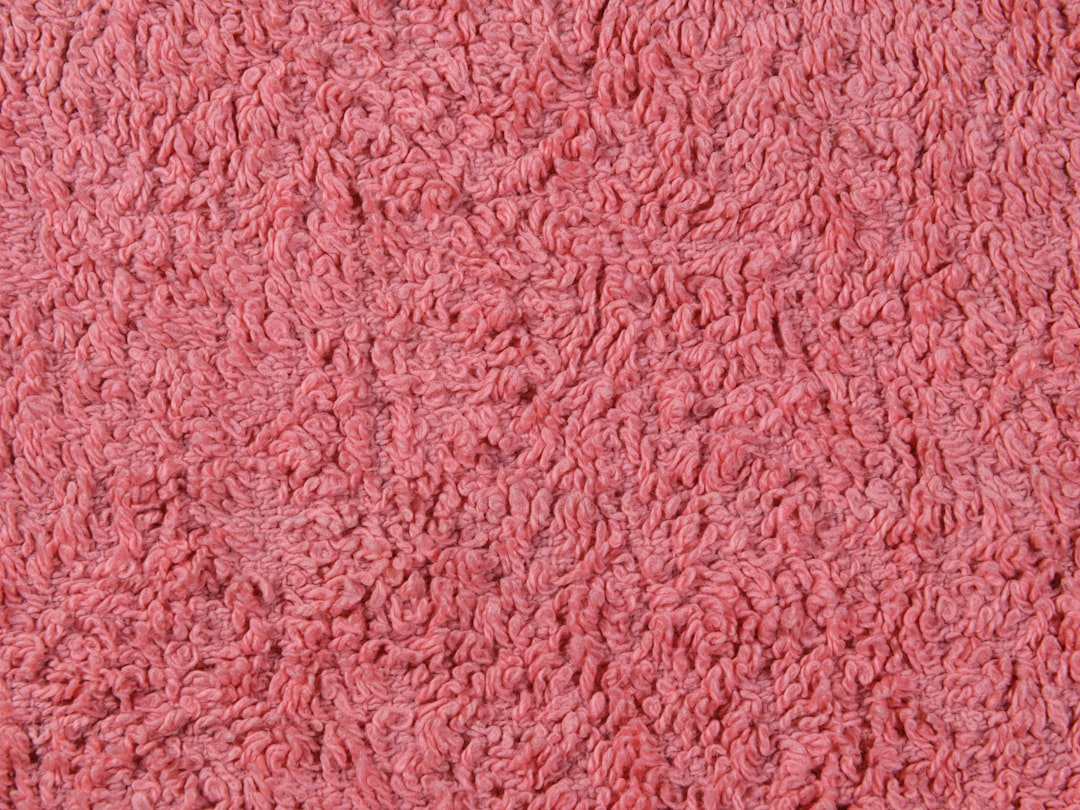
Carpet pad suppliers face recurring blind spots: anonymous showroom traffic, untracked engagement with print collateral, and scattered distributor interactions that never reach the CRM. QR codes embed trackable actions into every surface, closing offline-to-online gaps and accelerating the buyer journey. They also improve the buyer experience by making information and support available instantly, which builds trust and speeds decision making.
In a category where product differentiation can hinge on nuanced specs such as density, thickness, R-value, and emissions compliance, buyers need quick, reliable answers in context. QR codes let them retrieve the right information the moment they are considering a material in person. At the same time, suppliers capture intent signals that inform remarketing, sales prioritization, and inventory planning. It is a win for the buyer and a win for the business.
For example, a regional supplier discovered that a high proportion of contractors scanning shelf labels were comparing recycled content claims. That signal helped the supplier forecast demand for eco-forward SKUs, update event messaging, and expand certification content where it mattered most.
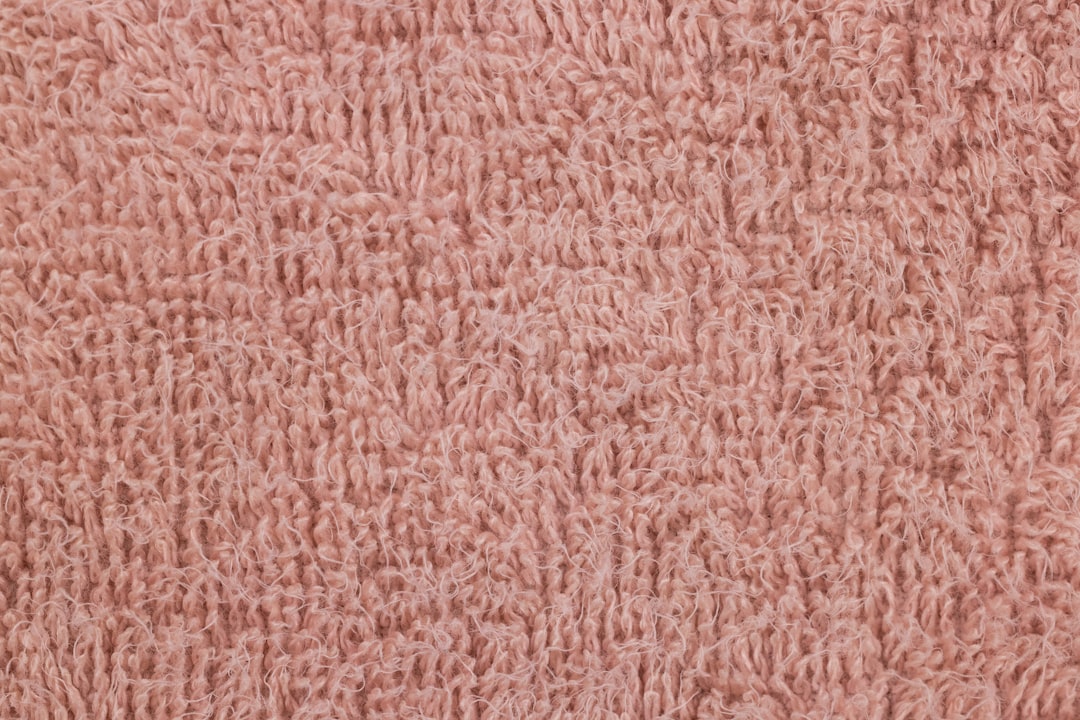
Different goals require different QR formats. Choosing the right format ensures each scan produces the desired action and the right data. In carpet pad, most high-value interactions relate to specs, pricing, and support, so prioritize formats that move buyers forward without friction.
Static QR codes are useful for evergreen content like a general catalog. Dynamic QR codes are recommended for campaigns and product materials that may change, since they allow you to update destinations, capture analytics, and run A/B tests without reprinting.
With Sona QR, you can generate, manage, and track any of these formats in a single dashboard. Use dynamic codes for anything you expect to optimize over time, especially product collateral, event assets, and promotional campaigns.
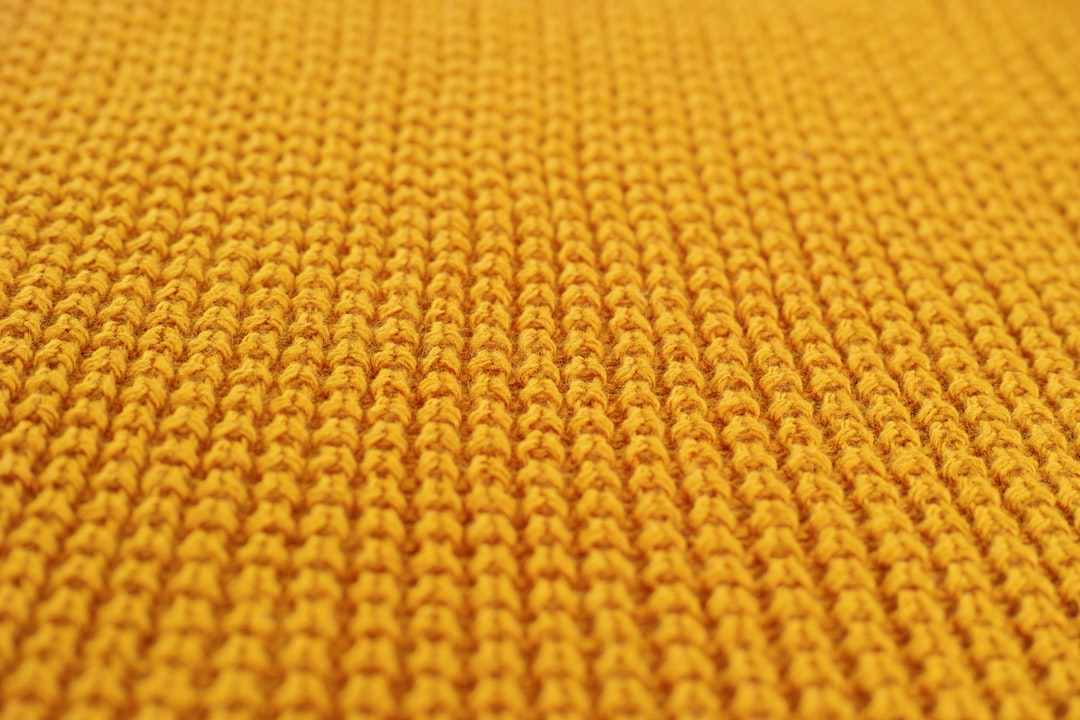
Revenue is lost when ready-to-buy prospects remain anonymous or when signals never reach sales in time to act. The most impactful QR placements meet buyers where they already engage with your brand: at events, in showrooms, on packaging, and across direct mail.
Trade shows, counter displays, and sample kits deserve special attention because they combine high intent with historically low traceability. By making those assets scannable and trackable, you can segment by product interest, prioritize follow-up, and allocate sales resources to the right accounts.
Deploying QR codes across these touchpoints ensures that every moment of interest translates into a digital signal, a follow-up plan, and a measurable path to revenue.
Use cases that simplify research, accelerate quotes, and support post-purchase success drive the highest impact. Your goal is to reduce friction at the exact moment buyers need help and to capture intent signals that guide your next action.
Each of these use cases turns a physical moment into a digital action while capturing data about who scanned, where, and why. That data fuels targeted nurturing, retargeting, and sales prioritization.
Every scan tells you something about intent. Where the scan happened, which asset it came from, and what a buyer looked at can inform precise audience segmentation. By using multiple QR codes across stages, you can create behavior-based cohorts that power email, SMS, and paid media with relevance buyers can feel.
Carpet pad suppliers should distinguish among contractors, flooring dealers, property managers, and designers because each persona values different outcomes. Contractors care about durability and install speed. Dealers care about margin and sell-through. Property managers care about lifecycle cost and acoustics. Designers care about certifications and comfort. Tagging scans by persona and use case makes your retargeting timely and specific. For deeper strategy on intent signals, read Sona’s blog post titled The Essential Guide to Intent Data.
With Sona QR, each code becomes a smart entry point to your funnel. Scan data flows into your marketing stack, enabling personalized follow-up based on real buyer behavior, not guesswork.
QR codes connect the dots across channels that historically operated in silos. By linking print and in-person engagement to digital experiences, you can coordinate messaging, attribute results, and maintain a single, up-to-date view of the buyer’s journey.
Carpet pad suppliers typically rely on brochures, sample boards, price sheets, trade shows, and distributor networks. Adding QR codes to these assets makes every interaction traceable and actionable. It also creates consistent handoffs from marketing to sales and from pre-sale to post-sale support.
With a centralized platform like Sona QR, you can manage all codes, monitor performance, and sync scan activity with your CRM and ad platforms. Your offline assets become fully integrated with your digital engine.
A repeatable process helps you scale QR campaigns without sacrificing quality or data integrity. Use the steps below to plan, launch, and optimize initiatives that convert real-world engagement into measurable results.
Start by identifying the friction you want to remove. Are you missing high-intent leads from trade shows, losing track of sample kit requests, or fielding too many basic support questions after purchase? Pick one problem that is close to revenue and design a use case that addresses it directly.
Define a clear business outcome such as “capture distributor leads at the flooring expo,” “increase quote requests from showroom traffic,” or “reduce support calls by providing on-package install guidance.” A focused goal simplifies your design, targeting, and measurement plans.
Decide whether you need static or dynamic codes. Static codes are fine for unchanging destinations like a general catalog. Dynamic codes are best for most marketing, because they are editable, trackable, and ideal for testing different offers or pages without reprinting. For flooring-specific considerations, see this flooring overview.
Choose the destination that aligns with the action you want. For pricing, send to a pre-filled quote form. For product research, send to an interactive comparison page. For customer support, send to a resource hub with videos and FAQs. Use Sona QR to generate and manage both static and dynamic codes from one place.
Design for scannability and clarity. Use high contrast, a sufficient quiet zone, and a size suitable for the viewing distance. Add a short, benefit-driven CTA such as “Scan for pricing,” “Scan to compare,” or “Scan for install help.” Include your logo or brand colors to build trust.
Test across devices, lighting, and angles. Verify that the landing page loads quickly on mobile and that the form fields are short and easy. Add UTM parameters for attribution. Run a small pilot with a few placements before you roll out widely, and gather feedback from reps and customers. For models, read Sona’s blog post titled Single vs Multi-Touch Attribution Models.
Prioritize channels where you already see strong offline engagement: trade show signage, distributor counter mats, sample kits, packaging, and direct mailers. Place codes at natural decision points, such as next to price boards, on frequently handled samples, or on the outer cartons that installers scan on job sites.
Match placement to context. In a noisy event hall, a large code with a clear CTA works best. On packaging, include short titles and icons for “Specs,” “Install,” and “Reorder” to guide quick actions. For mailers, personalize the code by region or account tier to route scanners to the correct rep or offer.
Monitor scan volume, conversion rate, and time to first response. Attribute scans to specific placements using unique codes and UTM parameters. Compare the performance of different messages, designs, and destinations to see what drives the highest engagement and fastest pipeline movement.
Feed insights back into your CRM and marketing automation tools. Use Sona QR to view analytics by time, device, and location, then A/B test offers or landing pages. Retire underperforming placements, scale winners, and keep iterating until your QR program becomes a reliable source of pipeline.
This process ensures suppliers move beyond one-off experiments to systematic, always-improving buyer engagement.
Proving marketing impact requires more than counting scans. You need to connect a scan to a session, a form fill, an opportunity, and ultimately a deal. QR code analytics provide the connective tissue between a physical interaction and digital revenue attribution.
Start by capturing the essentials: where the scan happened, which asset drove it, and which device was used. Next, measure outcomes such as page engagement, form submissions, quote requests, and time to first sales touch. Over time, track downstream metrics such as opportunities created, win rate, and average deal size for QR-sourced leads versus other sources.
Sona QR and Sona.com streamline this flow by capturing real-world engagement, pushing data into your CRM, and linking scans to revenue through identity resolution and multi-touch attribution. The result is clear visibility from first scan to closed deal. For methodology, see Sona’s blog post titled The Importance of Accurate Revenue Attribution.
Scaling a successful QR program requires discipline in design, data capture, and follow-up. Small tweaks to how you place, tag, and automate codes can produce outsized gains in scan rates and conversion.
Focus on the media your audience already touches: sample kits, packaging, trade show displays, and direct mail. Use unique codes for each asset so you can compare performance and make targeted improvements. Be explicit about the value of scanning so buyers know exactly what they will get.
Creative deployment examples that work well in this category include “Scan to reorder” stickers on job site packaging and “Scan to schedule freight delivery” codes on invoices. Each scan moves a task forward and signals real intent back to your team.
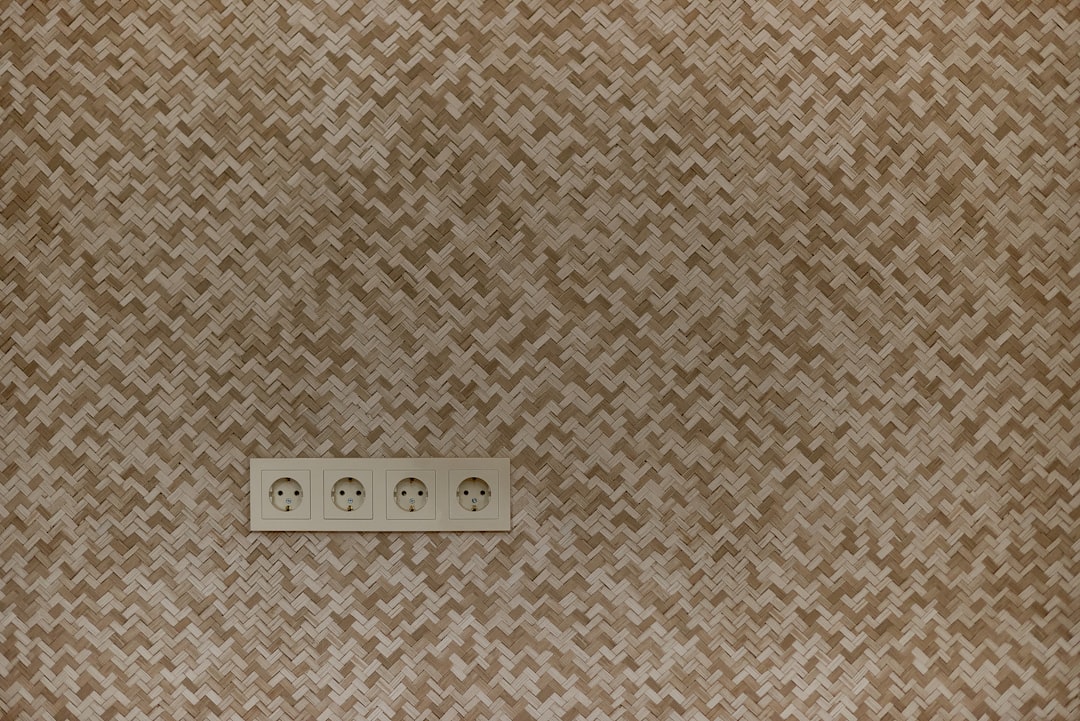
Translating offline interest into measurable outcomes is the central promise of QR codes. The examples below show how carpet pad suppliers are converting high-intent engagement into revenue and retention.
These stories highlight a simple pattern: put a code where a decision is happening, deliver immediate value with the destination, and track the signal so sales can act with context.
Success with QR codes rarely hinges on a single placement. It comes from repeatable habits: designing for clarity, placing codes where attention is highest, and following up quickly with relevant content. Avoid common pitfalls that obscure intent or slow the journey.
Place codes at eye or hand level, use high contrast, and keep CTAs short and benefit oriented. Pair codes with context such as icons or a one-line promise. Test everything before launch, including mobile performance, to avoid unforced errors that depress scan rates.
By sidestepping these pitfalls and building a QR strategy tied to your pipeline, you close visibility gaps, accelerate nurturing, and deliver a connected, data-rich experience from first scan to reorder.
QR codes provide carpet pad suppliers with the toolkit needed to close critical visibility gaps, accelerate lead nurturing, and deliver a connected, data-driven buyer experience. By transforming every offline interaction into a digital opportunity, suppliers can identify and engage high-value prospects before competitors act, automate retention and upsell strategies, and gain full-funnel insight from scan to revenue.
As the market continues to digitize, suppliers who integrate QR solutions into their marketing and sales ecosystem will be best positioned to capture growth and deliver sustained customer value. Start small with one high-impact placement such as trade show signage or sample kits, measure results diligently, and iterate until QR is a dependable source of pipeline. If you want a fast path to launch, Sona QR can help you generate, manage, and track your codes, then connect real-world engagement to revenue in your CRM. Start creating QR codes for free.
QR codes have revolutionized the carpet pad suppliers industry by transforming traditional product information and customer interactions into dynamic, measurable engagement opportunities. From streamlining access to detailed product specifications to simplifying order tracking and installation guides, QR codes enable carpet pad suppliers to enhance customer acquisition and deliver superior service experiences that build trust and loyalty.
Imagine instantly connecting customers to the exact product details they need, right from the showroom or warehouse floor—empowering them to make informed decisions and boosting your sales efficiency. With Sona QR, you can effortlessly create dynamic, trackable QR codes that update in real time without costly reprinting, giving you actionable insights into customer behavior and linking every scan directly to revenue growth.
Start for free with Sona QR today and turn every scan into a seamless customer interaction, a loyal client, or a closed deal in the carpet pad supply industry.
Carpet pad suppliers use static QR codes for evergreen content and dynamic QR codes for campaigns, with formats including web links, forms, vCards, SMS or email, and Wi-Fi access to provide specs, pricing, support, and contact details.
Suppliers should align QR code use cases with business goals such as driving quotes, surfacing specs, simplifying reorders, or educating installers and pick static or dynamic codes accordingly to enable updateable, trackable content.
QR codes close offline-to-online gaps by capturing buyer intent, provide instant access to specs and certifications, enable dynamic content updates, offer detailed tracking and attribution, and increase cost efficiency by turning physical assets into lead generators.
Effective QR code placements include trade shows, sample kits, packaging, point-of-sale materials, direct mailers, showroom signage, and out-of-home advertising to meet buyers where they engage with the brand and capture high-intent signals.
QR codes convert anonymous interest from printed materials and events into trackable leads with documented intent, automate follow-up through CRM integration, provide instant product information, and enable personalized nurturing streams based on buyer behavior.
Suppliers should identify a clear use case, select static or dynamic QR codes based on needs, design for clarity and test extensively, deploy codes in high-engagement channels, and track and optimize performance using analytics and CRM data.
They should track scan volume, conversion rates, time to first response, attribute scans to specific placements with UTM parameters, monitor downstream sales metrics, and sync scan data with CRM and marketing automation for comprehensive revenue attribution.
Avoid placing codes in hard-to-scan areas, using low contrast or small sizes, missing CTAs, failing to educate staff and customers on scanning benefits, and neglecting to test landing pages and analytics before launch.
While the article does not specify carpet pad thickness or material selection, it emphasizes using QR codes to instantly access detailed specs, compression ratings, and sustainability claims to inform buyer decisions in context.
The article advises using QR codes on trade show materials, packaging, and direct mail to access real-time specs, certifications, and pricing, enabling buyers to request quotes instantly and suppliers to capture buyer intent digitally.

Today's commercial flooring market is rapidly evolving, yet carpet pad suppliers still struggle with a lack of real-time insight into who engages with their materials. The shift to digital expectations collides with manual quoting, untargeted outreach, and missed opportunities when buyers research privately without logging interest or submitting a form. In an industry where product specs, pricing transparency, and rapid response are crucial, many suppliers are left frustrated, uncertain where high-value leads have gone, or if they slipped through the cracks entirely.
QR codes in marketing offer a frictionless way for carpet pad suppliers to replace outdated, paper-driven touchpoints with digital access. Whether placed on product packaging, trade show displays, invoices, or direct mailers, these codes allow prospects and returning customers instant entry to up-to-date pricing, detailed materials data, installation guides, and more, on the spot, with just a simple scan. This not only accelerates information flow but also brings the added benefit of capturing engagement signals that were previously invisible, reducing the risk of missing high-intent buyers who never filled out a form.
By integrating QR codes into their everyday workflow, carpet pad suppliers can transform every interaction into a measurable step on the customer journey. This approach enables smarter nurturing, moving beyond generic email campaigns or cold calling toward targeted, timely follow-up. The ability to see which companies or installers scanned, what they viewed, and when introduces a new level of insight, supporting strategies that reduce missed opportunities and help suppliers stay agile and relevant in a fiercely competitive space. See Sona’s take on Sona account ID for connecting scans to accounts.
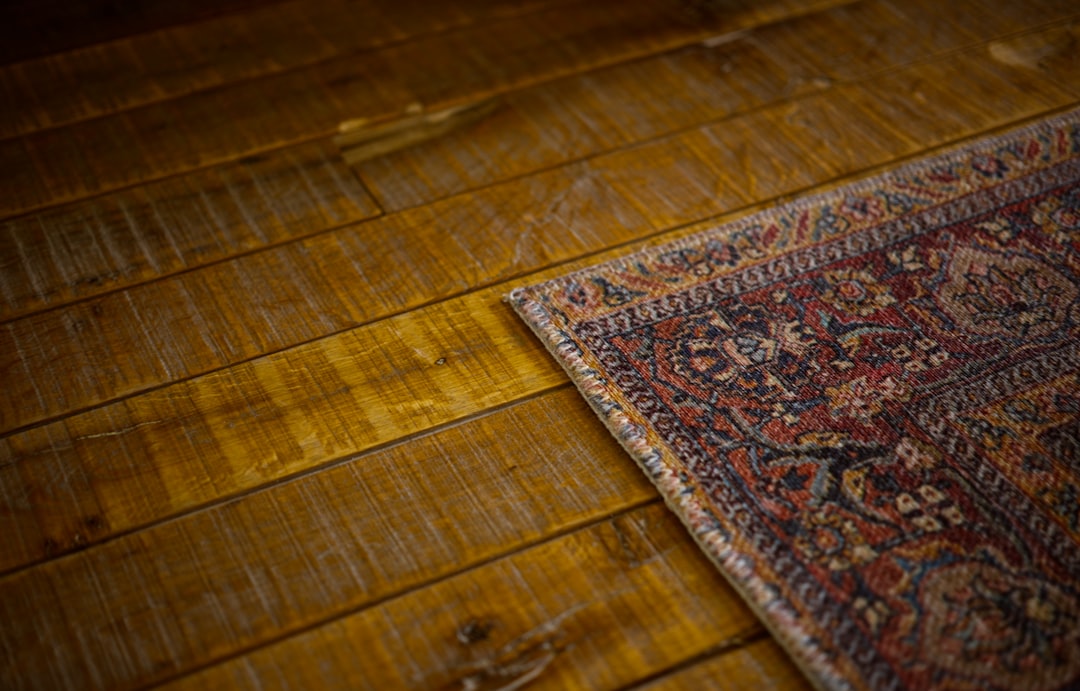
Industry professionals know too well the wasted hours tracking down missing sample requests, piecing together incomplete lead lists, or playing catch-up when buyers move quickly from initial interest to their next project. QR codes bridge these legacy obstacles with a digital-first, responsive process. Instead of handing out static brochures or price sheets that become outdated, suppliers can deploy scan-to-view content that updates in real time through the Sona QR overview and captures valuable engagement data.
This approach is not just about convenience. It is a structured method to improve sales velocity, lead quality, and customer experience. Replace paper forms with scan-to-submit requests, swap manual follow-up lists with CRM-triggered alerts, and turn every in-person interaction into a trackable digital moment. With the right execution, the result is a compounding effect: faster responses, better education, and more accurate targeting, all supported by clean analytics.
As you adopt QR-led workflows, start with one or two high-visibility use cases, such as sample boards or event badges, and expand. The operational lift is manageable, but the upside is significant: fewer missed leads, faster answers, and a clear view of where the next revenue opportunities lie.

Carpet pad suppliers face intense pressure to quote faster, educate buyers more thoroughly, and demonstrate sustainability credentials with confidence. At the same time, they must balance limited resources, complex product catalogs, and competitors that move quickly. The result is a set of familiar pain points where analog processes struggle to keep up with buyer expectations.
One of the most persistent challenges is visibility. Suppliers invest heavily in physical assets such as brochures, sample boards, and in-person events, yet have little insight into who engages with them. Sales cycles stall when buyers research privately and never signal their interest. QR codes close this visibility gap by providing an instant digital bridge from offline engagement to trackable online action.
Ultimately, QR codes are valuable because they transform unmeasurable, analog moments into data-rich opportunities. For suppliers who have long struggled to connect physical brand presence with digital follow-through, this technology provides a simple, scalable way to improve outcomes across the entire sales journey.

QR codes are flexible. They can take many forms and serve different purposes depending on the workflow. Carpet pad suppliers benefit most from formats that shorten the path to key actions, such as requesting a quote, accessing installation resources, or contacting a sales rep.
Selecting the right format for each touchpoint is as important as placement. For quick informational lookups on a sample board, a web link to a landing page works well. For events where connections need to be saved, a vCard ensures the right contact goes into a phone instantly. For showroom teams that need instant network access, Wi-Fi credentials can save time and reduce frustration.
Dynamic, editable QR codes are particularly powerful in a fast-changing product environment. When specs shift or compliance language updates, you can edit the destination without reprinting thousands of labels. See how to update QR codes. This not only saves money but also keeps buyers confident that the information they see is current.
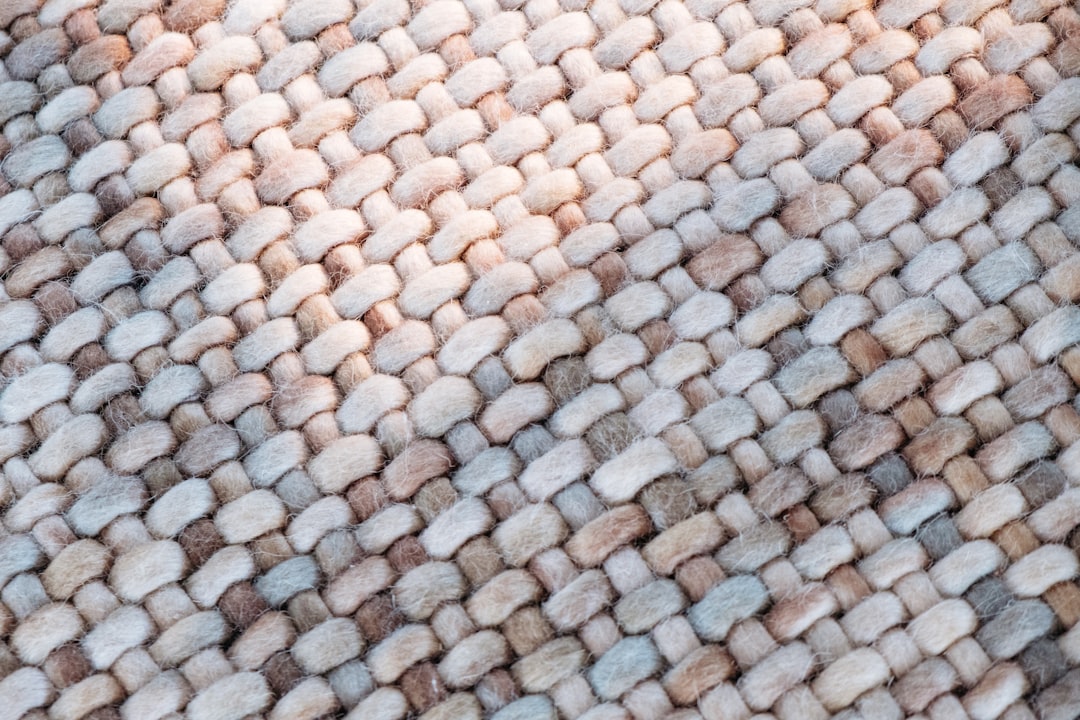
Growth often hides in the places where analog workflows mask digital intent. Every physical asset that touches your buyer is a chance to trigger action, collect data, and continue the conversation. Carpet pad suppliers already invest in high-impact placements like sample boards, event materials, and shipping paperwork. Turning these into scan-enabled surfaces brings visibility to the front lines of demand.
The goal is to place QR codes where the value is immediate. If a buyer is handling a sample board, the promise of instant installation guidance or a side-by-side comparison tool is compelling. If a distributor opens a delivery, a reorder or support link is timely. If an accountant reviews an invoice, a scan-to-pay or schedule-a-review option makes sense. Match the message to the moment, and results improve.
Over time, scan behavior across these placements will reveal which channels deliver the best leads. You can then invest more precisely, reduce waste, and anchor sales and marketing plans around data instead of assumptions.

Some use cases are universal across B2B industries, yet the most effective ones for carpet pad suppliers map to common buyer tasks: compare, learn, request, and reorder. By aligning QR destinations with these tasks, teams boost both engagement and conversion rates.
Focus first on use cases that frequently stall in analog form. For example, pricing and materials comparisons often require back-and-forth emails or static PDF attachments that are hard to keep current. Onboarding new wholesale accounts can be paperwork-heavy and slow. After-sale communication often lacks a clear trigger for feedback or reorders. QR codes streamline each of these scenarios.
As these use cases mature, you can expand into advanced flows, such as scan-to-schedule field training, scan-to-register warranties for performance pad lines, or scan-to-join loyalty programs for installers that track purchases and reward repeat business.
Each QR scan is a signal: the content intent, the physical context, and the timing of interest. By deploying multiple unique codes across touchpoints, suppliers can assemble natural audience segments that align with funnel stages. This unlocks better retargeting, sharper sales prioritization, and more relevant messaging. For step-by-step targeting tactics, see Sona intent retargeting.
To make this work, ensure every code is associated with a clear purpose and captures the right metadata. A code on a trade show demo board should be tagged differently than a code on an invoice. A scan from a contractor parking lot has a different intent than one from a design showroom. Feed these distinctions into your CRM to drive automated follow-ups that reflect real behavior, not assumptions.
With this setup, the right follow-up arrives at the right time. Installers get a video tip series after scanning a how-to guide. Retail buyers see a comparison walkthrough. Procurement contacts receive a quote assistant for their selected SKUs. The result is a measurable lift in conversion and a better customer experience.
Most suppliers already run a mix of analog and digital campaigns, yet they often operate in silos. A trade show may generate business cards and unstructured notes. A direct mailer might spark interest, but no way to measure it. In-store signage may influence decisions, but tracking is imprecise. QR codes connect these channels so that every offline impression can become an online action and a datapoint.
The key is orchestration. Design a funnel where a scan automatically routes each person to the next best step. After a scan from a sample board, send a comparison tool. After a scan from a truck decal, send a reorder form and an account rep contact. After a scan from an invoice, offer a maintenance guide or a loyalty enrollment. Consistency creates compounding value across campaigns.
When managed through a centralized platform like Sona QR, you can monitor performance by placement, control destinations, and sync data to your CRM for attribution. Start creating QR codes for free: Start creating QR codes for free.
Launching a QR initiative is most effective when you start with a focused objective and expand in phases. Treat this like any performance campaign: define the outcome, design for action, ensure tracking, and iterate based on results. Begin with one or two high-visibility assets, then scale across packaging, events, and paperwork as you learn.
The steps below outline a practical way to get up and running quickly, while building a foundation for attribution and retargeting. Where possible, use dynamic QR codes and connect them to your analytics and CRM stack so every scan contributes to a clearer picture of buyer intent.
Identify the most urgent workflow gaps where analog friction is causing missed opportunities. Examples include sample requests that go untracked at a flooring expo, buyers who abandon decisions because they lack clear materials comparisons, or slow response times for pricing verification on commercial bids.
Match the QR format to the action you want the buyer to take. If you need trackable engagement and the ability to update content later, choose dynamic QR codes. If you are sharing a stable resource that will not change, static may be sufficient.
A well-designed QR placement respects both form and function. The code must be visibly framed, sized for the expected scanning distance, and accompanied by a benefit-led call to action. Poorly executed design leads to the same drop-off you would see from an unreadable PDF or vague sales email.
Roll out codes to the placements that naturally align with buyer behavior. Prioritize assets where you consistently lose visibility or where speed of response matters most.
Treat your campaign like a living system. Monitor performance, learn which placements and messages perform best, and iterate. With a platform like Sona QR, you can track scans by time, location, and device, then sync outcomes to your CRM.
A brief closing review every two weeks helps you decide what to keep, fix, or expand. Momentum builds quickly when each iteration is grounded in scan and conversion data rather than guesswork.
One of the greatest frustrations in the supplier world is not knowing which marketing actions translate into sales. Anonymous foot traffic, untracked handouts, and fuzzy attribution cloud ROI analysis. QR code tracking creates a reliable trail from first scan to final revenue, making it easier to invest with confidence and improve results. For a deeper framework, read Sona offline attribution.
The shift is profound. Instead of hoping that brochures, sample boards, or event conversations will lead to a visible inquiry, you collect structured signals every time someone engages. Those signals can trigger follow-up, update lead scores, and connect to multi-touch attribution models that reflect the real buyer journey.
Closed-loop analytics transform QR codes from a novelty into a core performance channel. You move beyond vanity metrics and into measurable pipeline impact, which strengthens the alignment between marketing and sales.
Even a strong rollout can stall without clear attribution, consistent training, and creative placements that match buyer behavior. The following tips help sustain momentum and push scan rates and conversion higher over time.
Make sure internal teams know why the program exists, how it helps them hit goals, and what to say when encouraging scans. The best programs combine smart placement with human support, where reps and showroom staff reinforce the value behind the code.
As you scale, consider creating a short internal playbook with examples of best practices, brand-aligned CTAs, and a quick troubleshooting guide for common scanning issues. Consistency will help your team maintain quality as volume increases.
For carpet pad suppliers, QR codes unlock practical, measurable solutions to persistent pain points such as lost leads, disconnected touchpoints, and invisible buyer intent. By embedding scannable access across packaging, events, sales assets, and operational paperwork, teams gain the ability to engage prospects in real time, connect offline actions to digital outcomes, and build stronger relationships across the entire buying cycle.
The adoption of QR technology positions suppliers at the forefront of modern, data-enriched engagement. When paired with platforms like Sona QR and Sona.com, every scan becomes an actionable signal inside your CRM and analytics stack. The result is a smarter allocation of budget, agile campaigns that keep pace with changing information, and consistently higher satisfaction for buyers who value speed, transparency, and expertise. In a market where information access and responsiveness drive competitive advantage, QR codes turn every surface into an opportunity and every moment of interest into measurable progress.
QR codes have transformed the carpet pad suppliers industry from traditional, static marketing into dynamic, measurable growth drivers. Whether it’s streamlining product information access, enhancing customer service, or enabling faster order placements, QR codes replace cumbersome processes with instant, mobile-friendly interactions that capture valuable engagement data to maximize every touchpoint’s impact. Imagine your clients scanning a code to instantly view product specs, installation guides, or warranty details—boosting confidence and accelerating purchase decisions.
With Sona QR, you can effortlessly create dynamic, trackable QR codes that update in real time without the need to reprint materials. Connect every scan directly to actionable insights, optimize your campaigns on the fly, and turn offline interactions into measurable revenue opportunities. Start for free with Sona QR today and transform every scan into a seamless customer experience and a powerful sales advantage.
Buyers can compare carpet pad materials by density, thickness, sound absorption, and eco attributes through interactive charts accessed via QR codes.
Suppliers can provide QR codes linking to comparison tools and installation guides that help buyers understand and select the appropriate carpet pad thickness.
Suppliers can use QR codes on distributor agreements or order packets to link to pre-filled forms and ID verification, streamlining wholesale account onboarding.
Pricing transparency is enhanced by QR codes linking to up-to-date pricing sheets and quote request forms, allowing buyers to access current prices instantly.
Suppliers can track QR code scans, quote requests, and follow-up times as key metrics, feeding scan data into CRM systems to gain actionable insights on lead quality.
QR codes provide instant digital access to product specifications, pricing, and installation resources while capturing engagement data that improves lead visibility and sales follow-up.
Useful QR code formats include web links for product info, vCards for contact sharing, embedded forms for requests, app downloads for tools, and Wi-Fi access for onsite convenience.
By embedding QR codes on packaging, sample boards, and event materials, suppliers provide real-time info and capture buyer interactions to enable targeted follow-up and faster sales cycles.
Best practices include matching QR code types to buyer actions, designing clear CTAs, testing scannability, placing codes in high-traffic touchpoints, and integrating scan data with CRM.
They track scan counts, locations, device types, and follow-up actions with platforms like Sona QR, syncing data to CRM for real-time alerts and multi-touch attribution.
Growth comes from turning physical assets like sample boards, delivery paperwork, and invoices into digital engagement points that reveal buyer intent and enable timely outreach.
By assigning unique QR codes to different funnel stages and tagging scans by role and location, suppliers can segment audiences and trigger customized follow-ups and ads.
Suppliers should define the goal, choose the QR code type, design and test the code, deploy on key assets, and continuously track and optimize based on analytics.
QR codes capture engagement data from offline touchpoints, enabling faster responses, improved targeting, and reduced reliance on manual lead tracking.
Tips include assigning unique codes per asset and region, adding UTM parameters, automating follow-ups, training staff on benefits, and experimenting with invoice and delivery placements.

In today’s digitally driven world, QR codes have evolved from a novelty to a strategic powerhouse in bridging offline engagement with online action. For carpet pad suppliers, QR codes represent a frictionless and highly effective way to boost lead generation, streamline operational processes, and understand buyer intent, even when potential customers do not engage directly or leave their details. For a quick primer on marketing applications, see QR codes in marketing.
Carpet pad suppliers continue to face the challenge of adapting traditional sales channels to meet the growing demand for rapid, personalized customer experiences. Common frustrations include missing high-value prospects because tracking relies on printed sign-up sheets or manual CRM updates, and losing visibility when a trade show visitor leaves without filling out a form. With QR codes, every in-person interaction can reveal digital engagement signals, connecting the right leads to the right follow-up flows automatically and reducing the risk of lost opportunities.
This guide explores how carpet pad suppliers can use QR codes not just for convenience, but as a critical link to seamless offline-to-online journeys, actionable audience analytics, and smarter sales prioritization. The goal is simple: empower teams to reach buyers in real time, wherever intent first appears, while creating a measurable and repeatable growth engine.
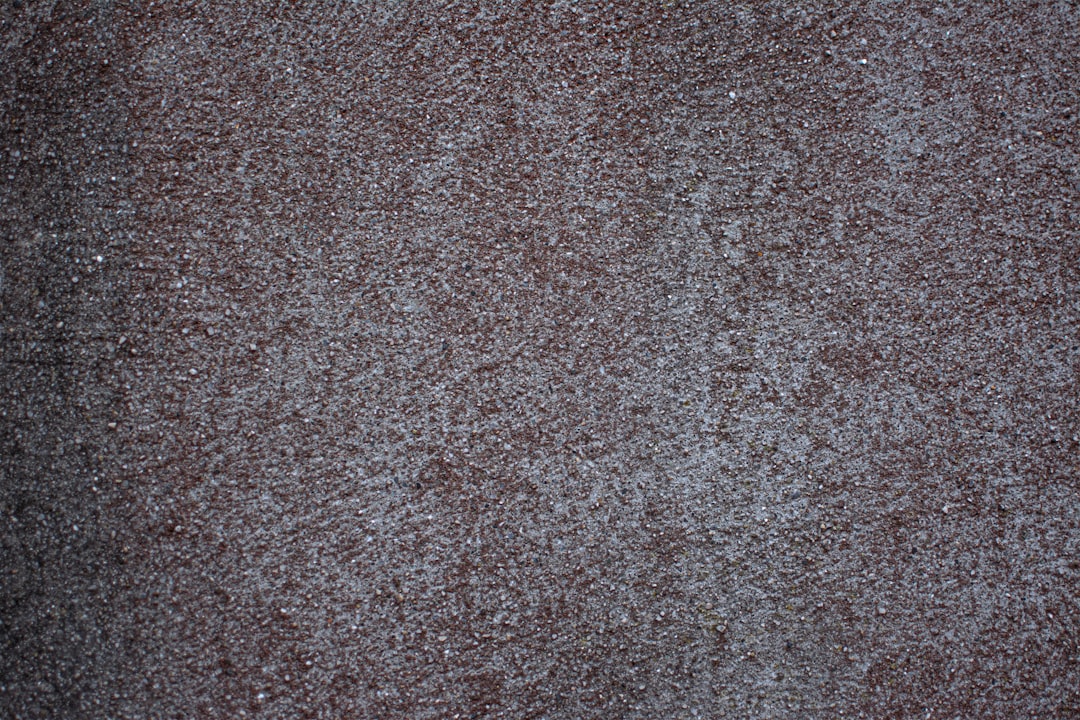
Carpet pad suppliers often struggle to capture intent when prospects browse a sample board, flip through a catalog, or grab a brochure without talking to a salesperson. QR codes bridge that gap by turning passive interactions into trackable, digital actions that funnel buyers to the right destination at the right time. When implemented well, they also eliminate manual steps that cause delays, errors, and missed opportunities.
Think of QR codes as the connective tissue between showrooms, trade show booths, packaging, and your digital stack. A single scan can route a contractor to a bulk quote request, a retailer to a spec sheet, or a facilities manager to an installation manual. The scan creates an intent signal that can be logged, scored, and acted on within minutes. The result is a more responsive buying experience and better prioritization for your sales team.
For example, integrating QR codes on product literature allows buyers researching carpet pad options to instantly request pricing or download installation guides. This reduces friction, prevents delays that allow competitors to step in, and creates a measurable path from an offline moment to a digital action.
Beyond initial deployment, consider how a QR program supports long-term growth. Standardize code design across all materials, train staff to highlight the benefits of scanning, and build automated follow-ups that respond to what the buyer did after scanning. Over time, this rigor turns every physical asset into a dependable lead source.
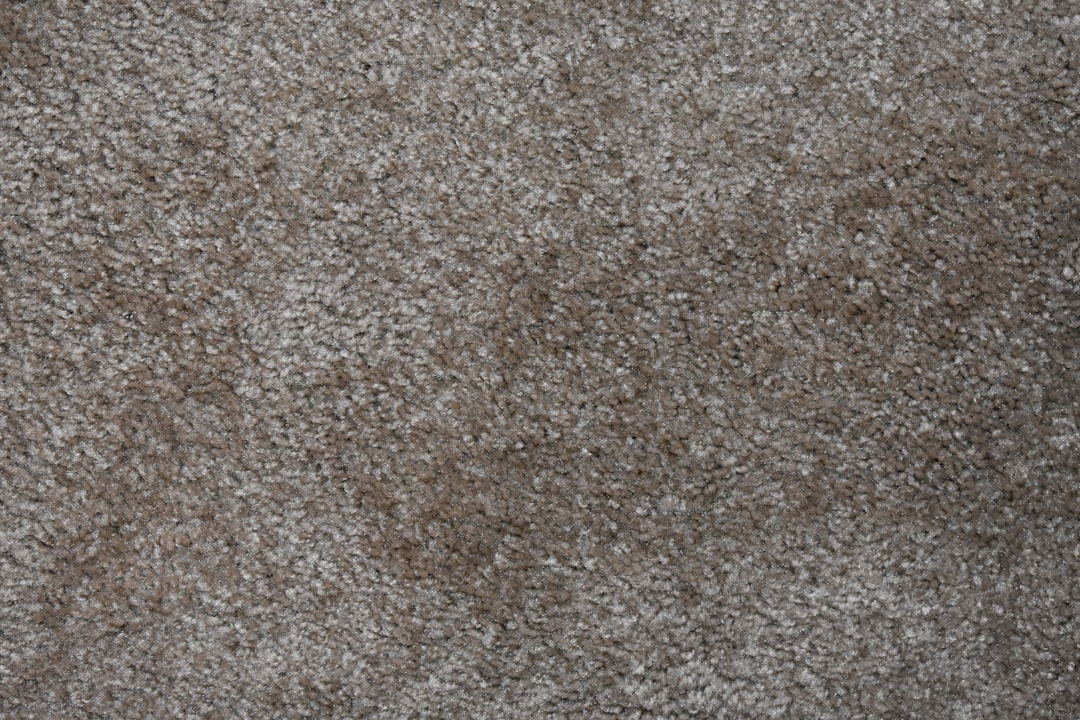
Traditional marketing materials such as brochures, product labels, and direct mail are critical in the flooring supply chain, but they fall short in revealing intent. Without a mechanism to connect offline attention to online activity, suppliers cannot prioritize outreach or personalize follow-ups. The result is a lag between interest and action, which is often when buyers choose a competitor.
QR codes turn every print asset and in-person moment into a measurable digital interaction that can be tracked and optimized. They also give buyers control: no app download, no long URL to type, and content tailored to their immediate need. Dynamic QR codes extend that value by allowing you to update destinations post-print, saving on reprints and keeping your content relevant as products evolve. For industry context, see this flooring-specific take on dynamic vs static.
Using QR codes on appointment cards for showroom consultations, mailers that promote pricing calculators, or packaging QR strategies that link to top-rated suppliers ensures every interaction is both measurable and actionable. Over time, the insights help you allocate budget to channels that consistently drive pipeline.

Carpet pad suppliers operate across a mix of wholesale, retail, and contractor channels, which means your QR toolbox should cover multiple destinations and actions. A flexible approach ensures buyers get what they need in context, whether that is a simple spec sheet or a multi-step quote form.
When choosing formats, think about the action you want. If the goal is to spur a conversation, use a short form with prefilled fields. If the goal is education, link to a specific guide or video. If you want to speed repeat visits in your showroom, consider a Wi-Fi QR that welcomes guests while routing them to a promotional microsite.
Dynamic QR codes are especially useful for campaigns and evergreen assets that require frequent updates. They capture engagement data with each scan, enable testing of content variations, and make it easier to target follow-ups based on the context of the action taken.
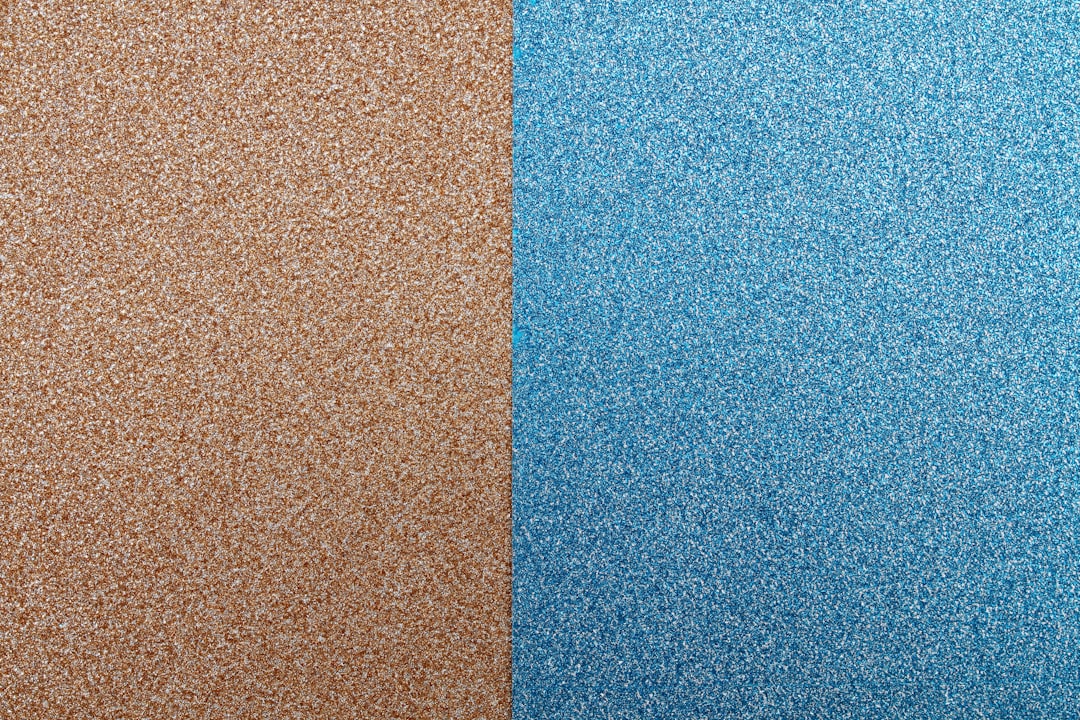
Growth often slips away in the handoff between offline and online interactions. A contractor pockets your brochure without calling. A retailer explores a sample board but does not ask a question. A fleet truck catches attention on the road, yet leaves no trace of the interested viewer. QR codes can thread these moments together into an accountable growth loop.
Start by mapping your physical touchpoints across the buyer’s journey. Identify where information is sought and decisions are made, then pair each moment with a QR that delivers the next best step. Over time, you will learn which placements create the highest quality leads and where to invest more budget.
Each QR-enabled interaction can be routed through your CRM and marketing tools. Tag scans by location, asset, and content theme, then score leads and assign work to reps based on buying stage. This closes the loop on common pain points such as lost follow-ups and unmeasured print spend.

The most effective QR deployments align with typical customer interactions in your channel. Focus on use cases that shorten the path from curiosity to clarity, and from clarity to conversion. With consistent execution, you can support buyers while simultaneously collecting the data you need to prioritize pipeline.
Position each QR with intent. Ask what the buyer is likely thinking at that moment, then deliver content that answers that question decisively. Keep the destination mobile-first, fast to load, and focused on a single next step.
By embedding QR codes into these use cases, suppliers tackle a core challenge: capturing and responding to interest before it fades. The program grows in value as your library of QR-enabled assets expands and your analytics reveal what content best predicts conversion.
Every scan is a behavior signal. When you deploy multiple QR codes across the journey, you can segment audiences based on what they needed and when they needed it. That segmentation fuels sharper remarketing, better content personalization, and smarter sales prioritization. For ad activation that maps to scan behavior, see Sona’s Playbook titled “Intent-Driven Retargeting: Driving High-Impact Campaigns with First-Party Intent Signals” here: Sona playbook.
For carpet pad suppliers, useful distinctions include audience type and buying stage. You may want to treat retail associates, commercial installers, and property managers differently. Likewise, a first-time brochure scan suggests awareness, while repeat scans of spec sheets point to late-stage consideration.
Concrete industry examples make this more actionable. A contractor who scans a “bulk pricing” code should enter a high-priority, sales-led sequence. A retailer associate who scans an “installation video” code might receive training materials and a rep check-in. A property manager scanning “warranty” content could receive a dedicated maintenance upsell offer. The specificity of each audience unlocks better conversion.
QR codes are the connective thread between your physical footprint and your digital marketing engine. They capture intent at the source, then direct that intent into trackable journeys that play nicely with your existing channels. Instead of treating brochures, displays, websites, and ads as separate, QR codes unify them with a single clickless action.
The impact compounds when QR data is centralized. With a platform that manages codes, syncs scans, and attributes revenue, your team can analyze performance across channels and double down on what works. Embrace a test-and-learn approach, swapping destinations or CTAs to find the highest yield mix. See how this works in the Sona QR product overview.
QR codes serve as the offline onramp to your digital marketing engine. A centralized QR management platform like Sona QR lets you create and govern codes, monitor performance, and sync scan data with your CRM and paid media. This infrastructure reduces operational complexity and makes cross-channel optimization simpler.
Launching a QR initiative is most successful when you plan the journey from scan to outcome. Align the code’s purpose with a business goal, then validate that every element, from design to placement, supports that goal. With the right process, your first campaign can prove value quickly and set a template for scaling.
Use the following steps to structure your rollout, then iterate based on real performance data. Remember to treat the destination page as part of the experience; it should be fast, mobile-friendly, and singularly focused on the next action you want.
Identify where QR codes remove friction and where a measurable gap exists. This could include anonymous in-store visits, slow follow-up on bulk inquiries, or low attribution on print collateral. Be specific about the buyer and the desired action so your message and CTA are crystal clear.
Choosing between static and dynamic codes depends on how often the destination may change and whether you need granular analytics. For any campaign that benefits from testing or ongoing optimization, dynamic is the safer bet. For an industry example of updateable codes, see QConnect updates.
QR codes work best when they are branded, visible, and accompanied by a benefit-driven CTA. Good design increases trust and scan rates. Testing ensures scannability across real-world conditions.
Place QR codes where they are most likely to be scanned by your target audience at a moment of need. Align placement with the browsing context so the content on the other side feels relevant and helpful.
Make data your advantage. Instrument your QR program with UTMs, campaign tags, and CRM integrations. Use insights to refine CTAs, creatives, and destinations for incremental gains over time.
Once your first campaign is live, use quick wins to build momentum. Share early results internally, expand into adjacent placements, and standardize a playbook that partners and sales reps can use. Platforms like Sona QR support each step, from code generation to analytics and CRM sync.
One major pain point for carpet pad suppliers is proving the ROI of offline efforts. Without attribution, it is difficult to justify print budgets, event spend, or showroom upgrades, and hard to align sales activity with real demand. QR-focused analytics close this loop by connecting scans to downstream behaviors and revenue. For a deeper framework, see Sona’s blog post titled “The Essential Guide to Offline Attribution: Maximizing ROI Through Offline Channels” here: Sona’s blog post.
To get the most value from analytics, track both the context of the scan and the outcome that followed. Context includes metadata such as location, time, and device; outcomes include actions like form fills, calls, quotes issued, orders placed, and reorders. Tie them together in your CRM to uncover the patterns that predict conversion. For model selection, see Sona’s blog post titled “Single vs Multi-Touch Attribution Models”: Sona’s blog post.
Sona is an AI-powered marketing platform for identity resolution, audience activation, and revenue attribution. With a stack that includes Sona QR and Sona.com, you can track every scan, measure engagement by channel and context, respond in real time with content or sales alerts, and sync results with your CRM. Identity resolution connects anonymous scans to known buyers; for guidance, see Sona’s blog post titled “The Essential Guide to Account Identification: Turn Your Website into a Goldmine”: Sona’s blog post. The outcome is a scalable feedback loop that informs budget allocation, staffing, and content strategy.
Once your initial QR campaigns are in market, small improvements in design, placement, and automation can generate outsized gains. Focus on clarity, speed, and follow-through. Always make scanning feel worth it by promising an immediate, tangible benefit and delivering on that promise.
Take time to train staff and partners on how QR codes fit into their workflow. The more your sales and retail teams understand the value of capturing scans, the more consistently they will promote the behavior to customers and prospects.
Consider creative deployments that fit your audience. For example, place QR codes on invoices to simplify reordering or on pallet wraps to provide job site installation videos. These touches convert routine operational paperwork into conversion opportunities.
Practical success stories help teams visualize how QR programs perform in the field. The following examples reflect common scenarios for carpet pad suppliers and how QR strategies turned silent interest into measurable momentum for sales.
Use these as starting points to brainstorm your own pilots. Consider your audience segments, the content you already have, and where a QR code would deliver immediate value with minimal friction.
These examples show how data-driven QR strategies overcome persistent pain points such as poor attribution, missed high-fit opportunities, and untimely outreach. The common thread is relevance: the code leads to content that solves the user’s immediate need and generates a signal your team can act on.
Experience shows that the best QR programs prioritize buyer value first: make scanning solve a problem, then ask for information if needed. Conversely, the most common pitfalls involve poor visibility, weak CTAs, and destinations that do not match the context of the scan. A code that is too small, too dense, or buried in clutter will not get scanned no matter how good the content is.
Avoid treating QR as a one-and-done tactic. It is a system that spans content, design, integration, and measurement. Build a lightweight governance model so codes remain on brand, data is consistent, and optimizations are implemented quickly without bottlenecks.
For carpet pad suppliers, QR codes have become a linchpin that connects the offline and online journey. A single scan can turn every brochure, display, or shipment into a digital touchpoint that surfaces intent and accelerates engagement. As your program matures, you will move from manual chasing to proactive, data-driven selling.
By addressing real pain points such as missed high-fit prospects, limited visibility, and incomplete buyer data, you can ensure every lead is captured, qualified, and nurtured with precision. Standardize the process, invest in analytics, and keep your content aligned with buyer needs. The result is ongoing growth, consistent feedback loops, and a marketing strategy that transforms physical assets into true revenue drivers.
If you want an end-to-end foundation for this approach, Sona QR helps you create, manage, and track codes across channels, while Sona.com connects scans to buyer journeys, CRM records, and revenue attribution. Start creating QR codes for free.
QR codes have transformed the carpet pad suppliers industry from static product listings into dynamic, measurable engagement tools. Whether it’s streamlining customer access to detailed product information, enhancing ordering processes, or enabling real-time inventory updates, QR codes replace traditional barriers with instant, mobile-friendly interactions that capture valuable data and drive smarter business decisions. Imagine giving installers, retailers, and end customers immediate access to the exact carpet pad specifications they need—right at their fingertips.
With Sona QR, carpet pad suppliers can create dynamic, trackable QR codes in seconds, update campaigns instantly without reprinting, and connect every scan directly to actionable insights and sales opportunities. No more missed leads or outdated materials—just seamless communication that boosts customer acquisition and satisfaction.
Start for free with Sona QR today and turn every scan into a powerful connection, a faster sale, or a stronger partnership.
QR codes enable carpet pad suppliers to turn offline interactions into trackable digital actions that reveal buyer intent, streamline follow-ups, and reduce lost opportunities.
Common use cases include linking to product comparisons, bulk pricing forms, installation guides, sustainability information, warranty registration, and showroom Wi-Fi access.
Static codes link to fixed content and do not change, while dynamic codes allow updating destinations after printing and provide detailed analytics for optimization.
Effective placements include product packaging, sample boards, trade show displays, retail signage, direct mail, invoices, and fleet vehicles.
Success is measured by tracking scan volume, conversion rates, lead form submissions, and integrating scan data with CRM systems to attribute revenue and optimize channels.
Branded codes with clear, benefit-driven calls to action placed at eye level with good contrast and sufficient quiet zones improve visibility and scan rates.
By tagging QR codes with specific actions and funnel stages, suppliers can segment audiences based on behavior and sync data with CRM and ad platforms for personalized follow-up.
Avoid poor visibility, weak or unclear CTAs, mismatched destinations, and treating QR as a one-time tactic instead of a system with ongoing governance and optimization.
QR codes unify offline assets like brochures and signage with digital campaigns by linking scans to landing pages, social promotions, direct mail, and event materials, all tracked centrally.
Steps include choosing the use case, selecting QR code type, designing and testing the code, deploying on high-impact channels, and tracking performance for optimization.
Use Sona QR's trackable codes to improve customer acquisition and engagement today.
Create Your FREE Trackable QR Code in SecondsJoin results-focused teams combining Sona Platform automation with advanced Google Ads strategies to scale lead generation

Connect your existing CRM

Free Account Enrichment

No setup fees
No commitment required

Free consultation

Get a custom Google Ads roadmap for your business






Launch campaigns that generate qualified leads in 30 days or less.
